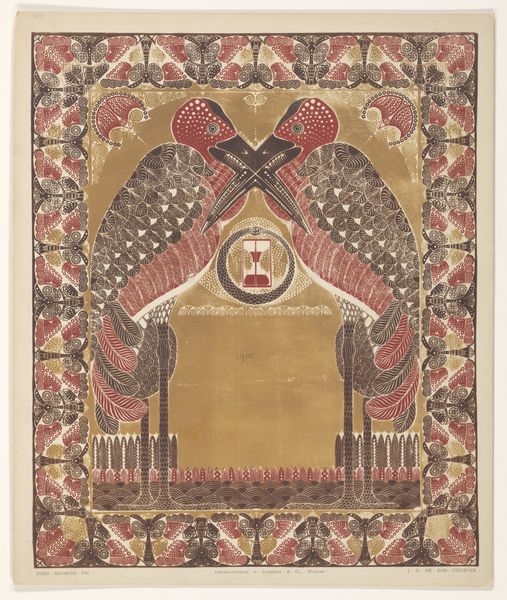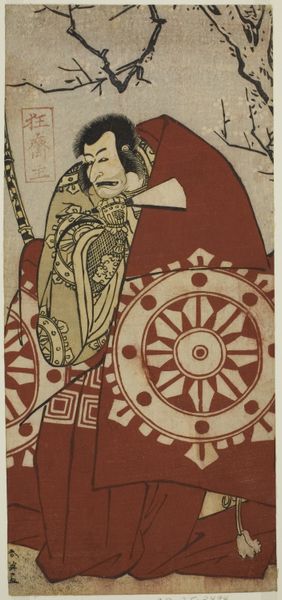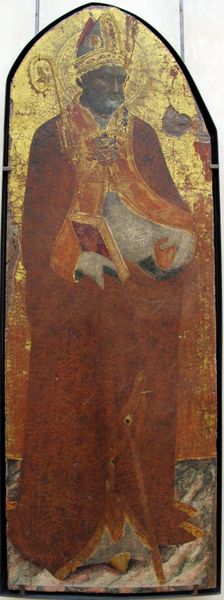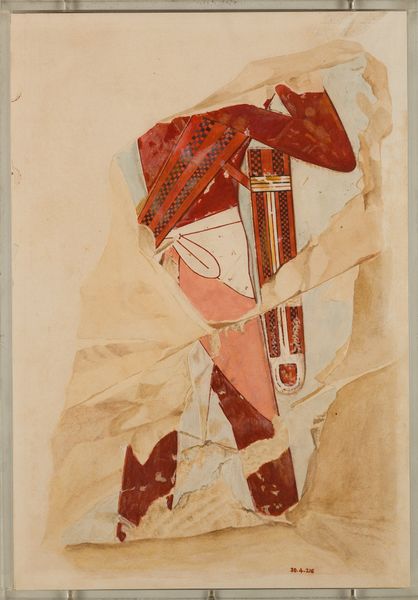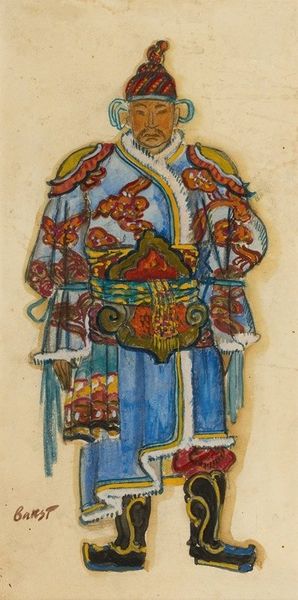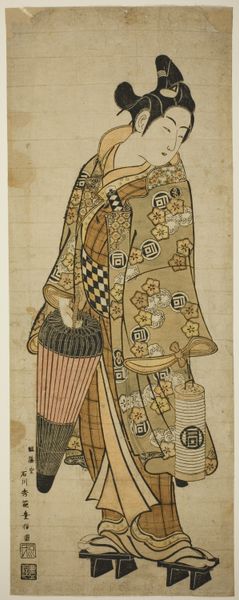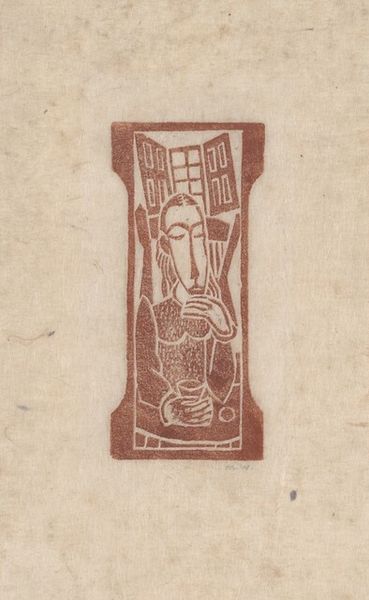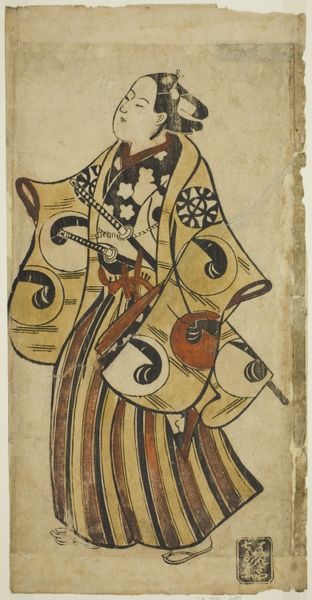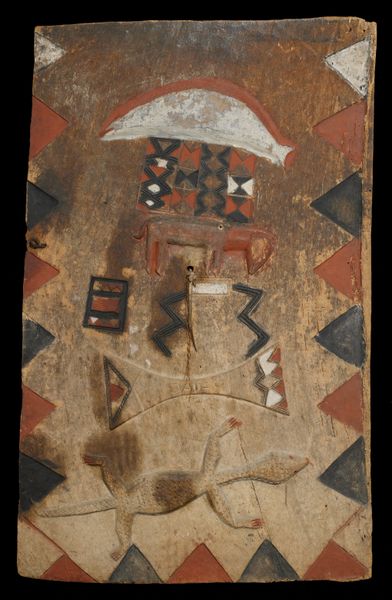
The Actor Ichikawa Danjuro V as Kudo Suketsune in the Play Koi no Yosuga Kanegaki Soga, Performed at the Ichimura Theater in the First Month, 1789 c. 1789
0:00
0:00
print, woodblock-print
#
portrait
# print
#
asian-art
#
ukiyo-e
#
figuration
#
woodblock-print
Dimensions: 29.3 × 13.7 cm (11 9/16 × 5 3/8 in.)
Copyright: Public Domain
Editor: So this woodblock print, "The Actor Ichikawa Danjuro V as Kudo Suketsune," dates back to around 1789 and was created by Katsukawa Shun'ei. There's such an intensity in the actor's expression – almost a controlled anger. The patterns are mesmerizing but I'm curious about what all of this represents? Curator: Indeed, a striking image. What strikes me immediately is the layering of symbolic meaning. This is more than just a portrait; it's an invocation of character, social role, and a whole network of cultural memory. Notice how the geometric patterns behind the figure are not just decoration but a visual language – perhaps hinting at lineage, or the rigid structures of the Shogunate. Do you see how the flowers could reference ephemeral beauty or perhaps something more specific to the narrative being portrayed? Editor: Now that you mention it, it makes sense how patterns would have a cultural significance! It wasn't just an aesthetic choice, it was meaningful. Curator: Precisely. Ukiyo-e prints were designed to convey narratives economically and emotionally, using visual short-hands understood by contemporary audiences. This actor isn't just in costume, he is wearing layers of identity. His stance, facial expression, combined with these floral emblems – are designed to communicate the character's virtue, or destiny within the play. Consider also the choice of the playwright to select Kudo Suketsune... it reveals more about contemporary society than the historic one being portrayed. Editor: So by studying the symbolism in this print, we’re getting a glimpse into not just the play, but also the values and cultural codes of 18th century Japan? It’s incredible to see how much meaning can be packed into one image. Curator: Exactly! And to understand those layers, we must learn how these symbols functioned within the visual culture of the time. This opens the doors to deeper understanding and interpretation of works from other eras and regions, revealing patterns of cultural memory that we often take for granted.
Comments
No comments
Be the first to comment and join the conversation on the ultimate creative platform.
